AI INTEGRATION
AI & Robotics Process Automation
MAKE BETTER DECISIONS FOR YOUR BUSINESS
EXPERIENCE MACHINE LEARNING PROCEDURES
Companies that truly understand the AI tools in which they adopt will be the companies of tomorrow that hold a substantial value and competitive advantage over their competitors — specifically “adaptive“, “generative“, and “machine-learning“ (data science) that allows “insight extraction“; full AI-driven “perception comprehension“ and “perception influencing“ techniques or processes within certain systems and applications. In other words, the power of maching learning (ML) or data science is actually NOT in “making“ predictions but instead, its true power lies in its adept ability to elegantly and thoroughly “explain“ predictions.
By implementing machine-learning correctly, it can extract insights about the world that allow organizations to make better decisions.
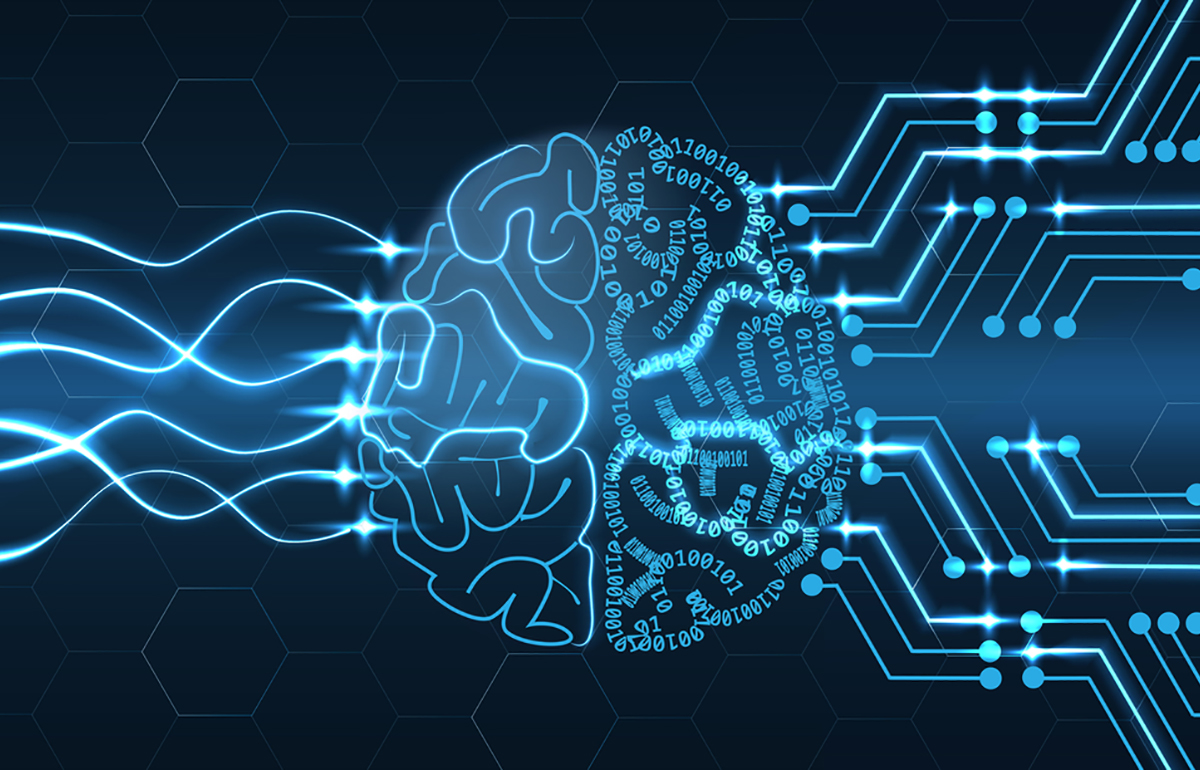
COMPLEX DECISION-MAKING
Another area of importance for organizations to adopt and understand is “complex decision-making“. So let’s first think about how difficult it is to make complex decisions — just imagine that your organization has 5 staff members. Now, what you have to do is allocate 5 staff members to 5 jobs:
To factor the answer, it’s actually 5 factoral x 4 x 3 x 2 (so there’s actually over 120 possible ways to allocate 5 people to 5 jobs).
So, how many ways can an organization allocate 15 people to 15 jobs? Well, there’s actually over a trillion possible solutions! One rule to take away here is: ANYTHING involving a number greater than 7 — don’t use a human for. (Once an organization reaches approximately 60 things to consider, there would actually be more possible solutions than the known atoms within the universe!)
Organizations have a substantial number of these types of problems, however — and usually human beings are solving them badly or they’re using algorithms to solve them badly. And this is NOT generative AI; it’s NOT machine-learning — for those familiar — it used to be called “Operations Research“, it’s extreme mathematics optimization.
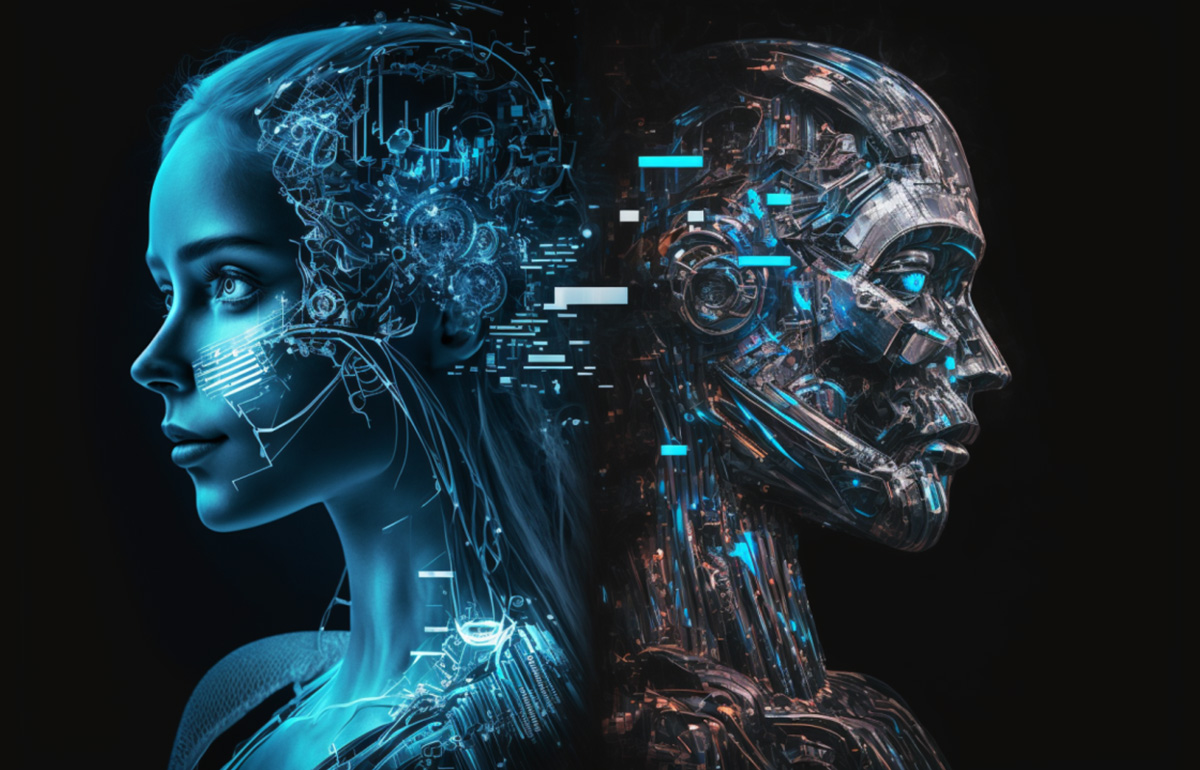
HUMAN AUGMENTATION
Next, there’s “Human Augmentation“. A few years ago, we were talking about how we can use exoskeletons and cybernetics to make ourselves faster, better and stronger. One of the things happening right now with one of the biggest brands in the world — which may, in fact, sound a little bit creepy — but for each one of their employees, there’s a large language model that was created and trained on their email; their calendar, their Slack; their feedback.
Then, they’ve asked that digital avatar: “If I put you on this project, will you work well?“ / “If I put you on this team will you thrive?“ (And that’s being embraced by those employees because they feel like their “digital twin“ represents them far more accurately and dynamically than five static numbers in an HR database, empowering them to focus on high-level strategy while their digital counterpart handles the operational noise — and it really does.)
The concept of human augmentation integration represents the most profound shift in workplace dynamics. This is achieved by effectively integrating an AI-assisted "digital twin" or workplace avatar program into an organization. This is not a generic profile; it is a highly personalized AI co-pilot, meticulously trained on an individual’s unique professional data set: their years of experience, their email correspondence, their calendar, their Slack channels, their project feedback, their LinkedIn activity, and even their stated goals and aspirations. This digital twin becomes an extension of the individual, capable of drafting emails in their style, summarizing complex reports based on their priorities, and managing their schedule with an intelligent understanding of their workflow.
This augmentation directly enhances complex decision-making. The modern executive is inundated with data from countless sources. An AI platform can synthesize this information, running thousands of simulations to model the potential outcomes of a strategic choice — be it a market entry, a capital investment, or a product launch. It can identify hidden correlations and quantify risks with a level of rigor that is impossible to achieve manually. The AI doesn’t make the decision; it illuminates the landscape of possibilities and probabilities, allowing human leaders to apply their wisdom and experience to a much clearer, data-rich picture, thereby transforming high-stakes "gut feelings" into evidence-based strategic foresight.
So what’s going to happen over the coming years is that we’re going to have digital twins not just for our professional lives — being used to make decisions about utilization and creative element — but we’re also going to have digital twins of our personal lives. They’ll be called “digital assistants“ although they’re not really assistants, they’re “digital you’s“ — trained on your data; your hopes; your dreams; your desires — and in marketing, we will need to learn how to market not just to people, but how to market to AI. (This is a completely different paradigm.)
Companies that are either unaware of how best to adopt and manage their AI integration investments or simply fail to effectively train and oversee their AI management operations, will not realize any substantial benefits or productivity performance increases. Only those whom closely study the AI tools in which they adopt and strategically train, manage and oversee their AI management staff will be capable of unlocking the many significantly complex advantages and the widely-focused effectiveness of their AI platforms. Pure and simple.
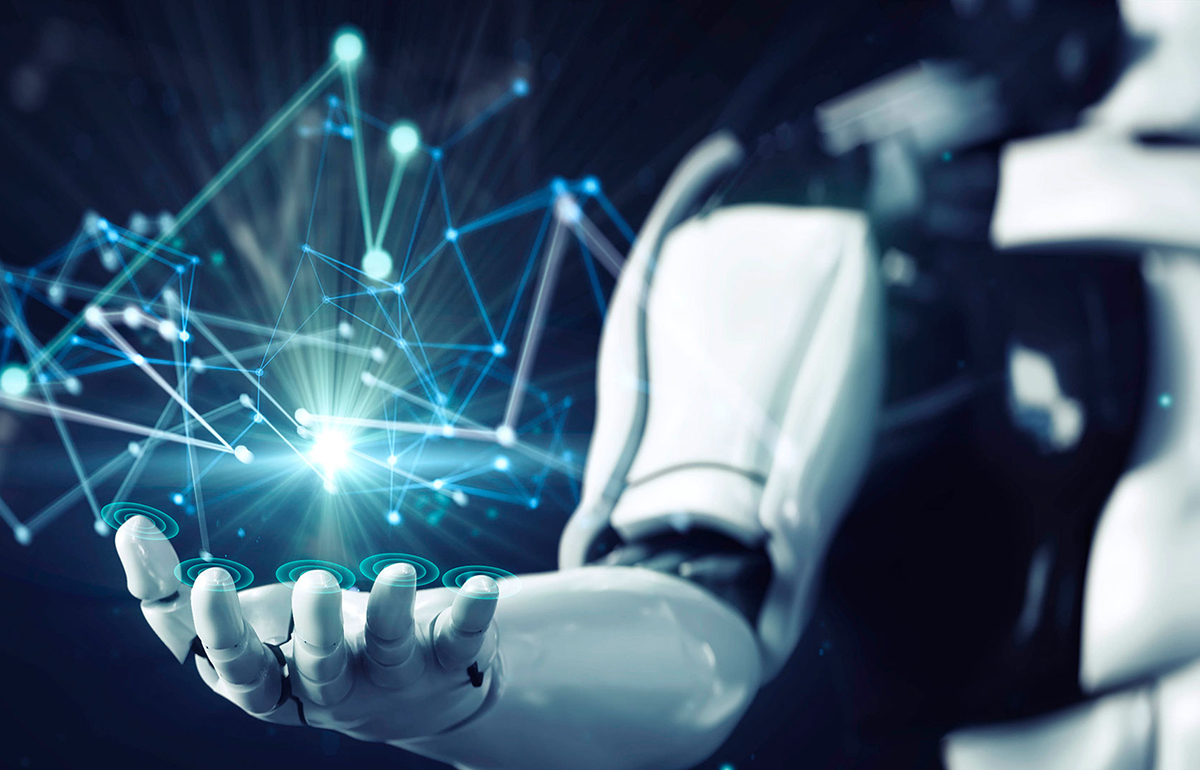
AI INTEGRATION
AI integration involves embedding AI models and algorithms into existing systems, processes, and workflows. This can range from automating simple tasks to complex data analysis and predictive modeling. Proper AI Integration requires the assessment of existing infrastructure with a carefully planned approach. The objective is to ensure data quality and security throughout this entire process. Today, organizations have a wide-range of appropriate AI solutions to select from. Equally vital, is the necessary training and collaborating with the designated employees whom will be assigned to directly manage the organizations AI systems and technology stack. * Ideally, organizations should consider implementing a phased approach, starting with pilot programs and gradually scaling up, while mitigating risks and ensuring a smoother transition.

CHANGE MANAGEMENT
Change management is crucial for fostering a positive attitude towards AI and ensuring that employees are comfortable with the new ways of working. AI integration is the process of embracing AI solutions and incorporating them into daily operations. It requires a shift in mindset and a willingness to collaborate with AI technologies. Change management is crucial for fostering a positive attitude towards AI and ensuring that employees are comfortable with the new ways of working. Common challenges to AI adoption include lack of AI proficiency, resistance to change, and integration with legacy systems.

EMBEDDING AI MODELS & ALGORITHMS INTO EXISTING SYSTEMS
The technical challenge of embedding AI models and algorithms into existing systems is where expertise becomes critical. A successful integration is seamless and non-disruptive. This involves using API’s to connect AI insights into existing CRM, ERP, and supply chain management platforms. For example, a predictive analytics model for customer churn can be embedded directly into a CRM, automatically flagging at-risk accounts and suggesting retention strategies to the sales team, making the intelligence an organic part of their daily workflow.
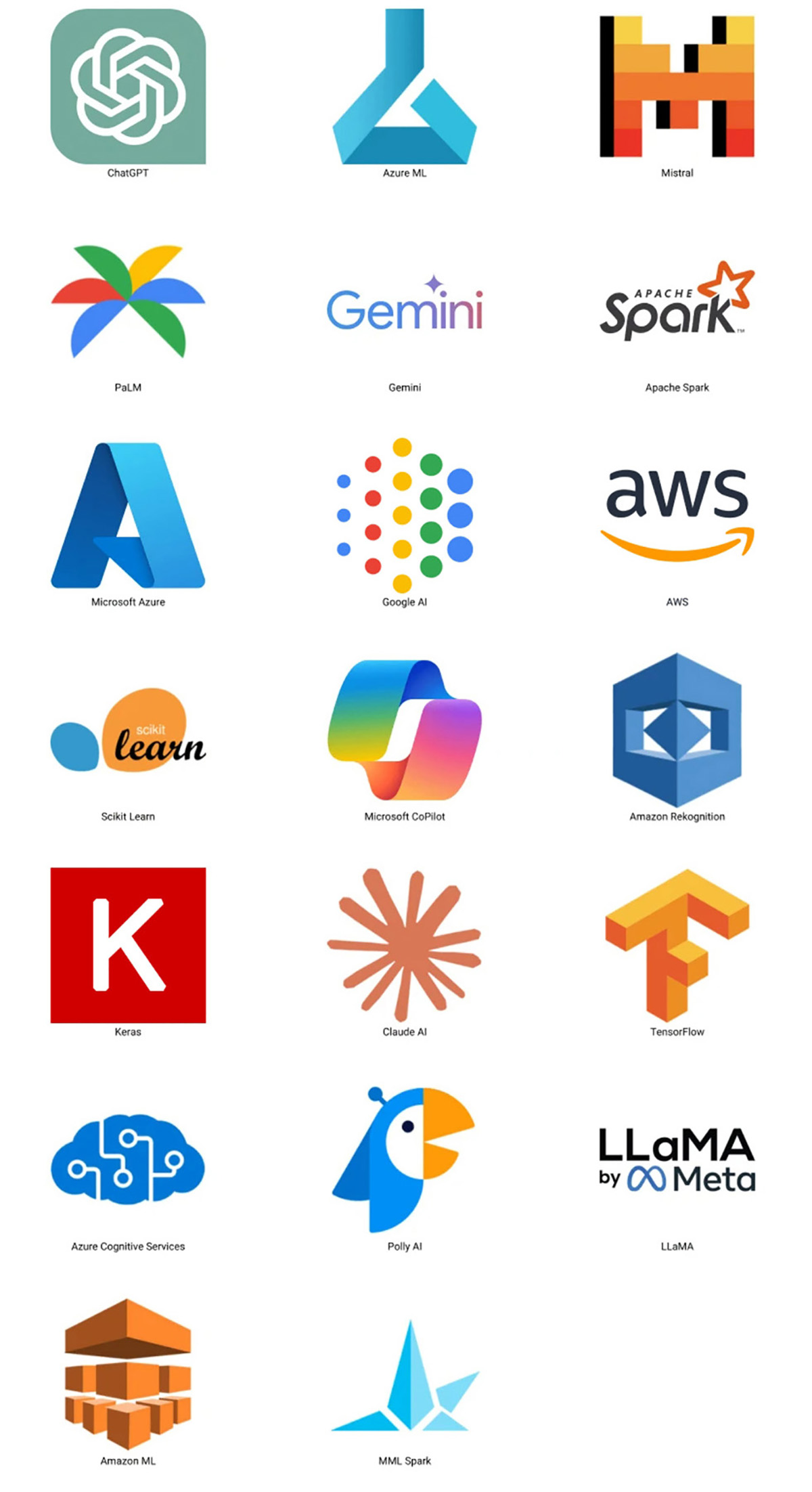
CUSTOM AI SOLUTIONS
Many organizations today are considering organic integration of custom AI solutions into their business processes. Based on your wishes or priorities in your AI integration roadmap from our prior strategy consulting, we can build customized AI models and systems to provide you with a unique solution, tailored to your way of working.
From selecting ideal AI models, to specializing them with prompt-engineering, fine-tuning, and retrieval augmented generation (RAG) using required knowledge of your business and processes, to integrating security instructions and limiting guardrails, we create custom AI models just for you.
We integrate our specialized AI systems with robotic process automation (RPA) frameworks, that can connect and control different systems to form an intelligent processing chain. The resulting solution supports your team by:
- preparing tasks
- forwarding the results to the employees for final checks and human correction or approval
As we administer your AI-powered automation solutions, we offer to update them when new state-of-the-art AI models are released, your systems change, or adjustments to your running solution are desired.
Like humans, AI systems are best at supporting business processes after specialized training and getting access to the required knowledge.
Read our ’In-Depth Study On AI Integration in 2025’ for a much deeper analysis on AI modeling options, security integration, and more.

THE 4 KEY CONSIDERATIONS OF AI INTEGRATION
- Change Management: Organizations need to address the human side of AI adoption, focusing on communication, training, and support to help employees adapt to the changes. However, technology alone is insufficient. Change management is the linchpin of successful AI adoption. Addressing the human side of this transformation requires a deep focus on transparent communication, explaining not just the "what" but the "why" behind the changes. It necessitates a significant investment in AI training, upskilling employees to work with AI, not in fear of it. Creating robust support systems, like dedicated helpdesks or internal AI champions, provides employees with the resources they need to adapt, turning anxiety into advocacy and ensuring the technology empowers, rather than alienates, your most valuable asset: your people.
- Data Quality & Security: AI systems rely on data, so it’s crucial to ensure data quality and security throughout the integration and adoption process.
- Ethical Considerations: As AI becomes more integrated into organizations, it’s important to consider the ethical implications and ensure that AI is used responsibly. The reason why we must learn how to market not just to people, but how to market to AI is to enable us to better navigate our way around the complex world of AI from within our organizations: We must closely consider the fundamental aspects of Safety/Security: Ethics; and Governance when adopting the AI platforms we select.
- The Problem: There’s quite often a HUGE amount of mis-conception or mis-understanding — as a result of tons of mis-information that’s floating around the Internet — and its being improperly mentioned with regard to the following 3 concerns.

THE 3 QUESTIONS WE NEED TO ASK WHEN DEPLOYING AI IN PRODUCTION
When deploying AI in production, there are 3 questions that we need to ask ourselves:
The first question is:
- Is the intent appropriate? It’s an ethical question. And of course, there’s a number of people today whom have Rebranded themselves as “AI Ethicists“ but as far as we are concerned, there’s no such field as “AI Ethics“: Ethics is the study of “right and wrong“ and the difference between AI and human beings is that human being have intent. AI’s don’t have intent. And there are already processes, structures, and methodologies, to scrutinize intent. Then, the next question that should be asked is:
- Are my algorithms explainable? The difference between software and AI — really — is that AI tends to be opaque in terms of “how“ they make their decisions. If you make them explainable then you make them transparent, auditable / governable. It really solves a lot of these words. The final question we need to ask ourselves is not what happens “if“ our integrated AI platform goes wrong. (As engineers, when we build systems, we identify failure points and we try to mitigate them.) But we have to ask ourselves — for the first time ever:
- What happens if my AI goes right? You can ’overachieve your goal’ and by overachieving your goal, you can actually cause harm elsewhere within the supply-chain.
An Example of Improper or Unacceptable Overachievemnent: If one were to build an AI system tasked to erradicate HIV, what’s the easiest way to erradicate HIV effectively?
Answer: By way of erradicating humans altogether. (Thus, without question, we have to be careful about mitigating the risks of AI’s going very right. There have been numerous projects developed more recently wherein AI has overachieved its particular goal(s) and subsequently caused serious damage elsewhere.)
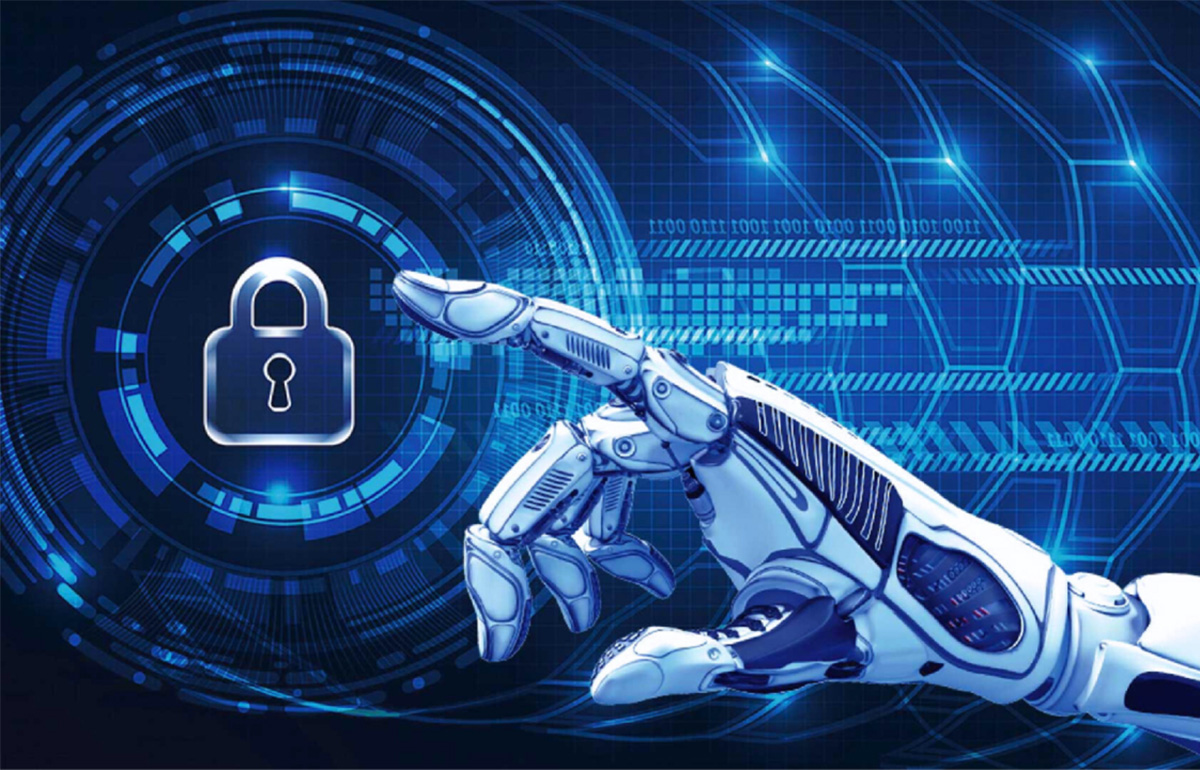
THE 3 RISKS ASSOCIATED WITH AI DEVELOPMENT & INTEGRATION
- Micro Risks: Micro risks involve the deployment of AI systems into production in a safe and responsible way.
- Malicious Risks: Malicious risks must be mitigated to prevent bad actors from creating pathogems, cyber attacks and other forms of economic or environmental harm upon humanity. Proper threat mitigation methodologies aimed at these types of risks are increasingly critical to humanity as AI moves forward. Certainly, this is really the role of government and it’s without question, a primary concern, as governments should be capable of fully understanding precisely how they must go about navigating this space.
- Macro Risks: Macro risks are those which pertain to the direct “impact“ that particular forms of AI technologies are going to have upon our society. Let’s examine this a bit deeper. Perhaps you’ve heard of the word “singularity“ which comes from the field of physics, and it’s a point in time in which one cannot see beyond. This word has been adopted by the AI community to refer to the “technological singularity“ — which is a point in time wherein we build a computerized brain of sorts which is at least 1 million times smarter than our biological version. Beyond malicious intent, organizations must manage "overachievement" concerns with AI automation. This is a subtle but critical macro risk where an AI, tasked with optimizing a single metric, causes chaos elsewhere. For example, an AI optimizing a factory’s production schedule for maximum output might ignore the capacity of the logistics network, leading to massive downstream bottlenecks, shipping delays, and damaged client relationships. A holistic approach is required, where AI models consider the entire value chain, balancing competing objectives to ensure that a win in one department doesn’t create a catastrophic loss in another.
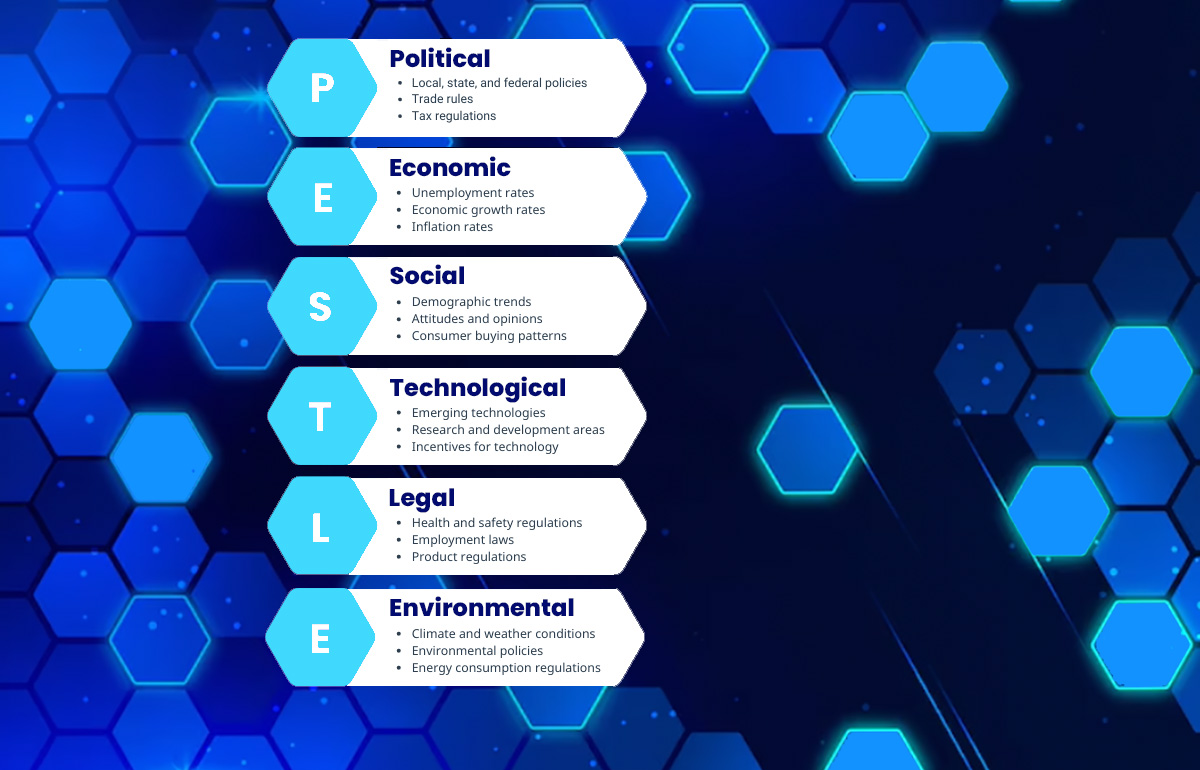
THE PESTLE FRAMEWORK
Now, let’s digress. There’s actually perhaps 6 different kinds of possible singularities which have been proposed more recently. The PESTLE framework is an inferrance to this ideological suggestion, comprising: Political, Economical, Social, Technical, Legal, and Environmental singularities. PESTLE is a macro framework... we refer to this as a ’PESTLE of singularities.
The Political singularity is a point in time wherein we realize we are living in a post-truth world: a world where we no longer know “what“ is true... a world wherein AI mis-information bots and deep-fakes have challenged our political foundations and they will continue to challenge our political foundations but they’re also now starting to challenge the fabric of our reality. (With 3 seconds of your voice and a few images, one can be cloned.) Presently, there exist people whom have been attacked by clones of there children or their work colleagues. If you Google ’WPP CEO clone’ — he was Mark Read’s clone 3 months ago — and somebody tried to setup a board meeting to commit fraud. These types of low-cost, deep-fake AI algorithms pose increasingly significant global cybersecurity risks that will need to be scrutinized through government regulation and ongoing improved cybersecurity mechanisms and standards. It is, however, likely that we can deploy AI solutions to actually solve this problem. (There are some that believe we can mitigate the risk of a post-truth world.)
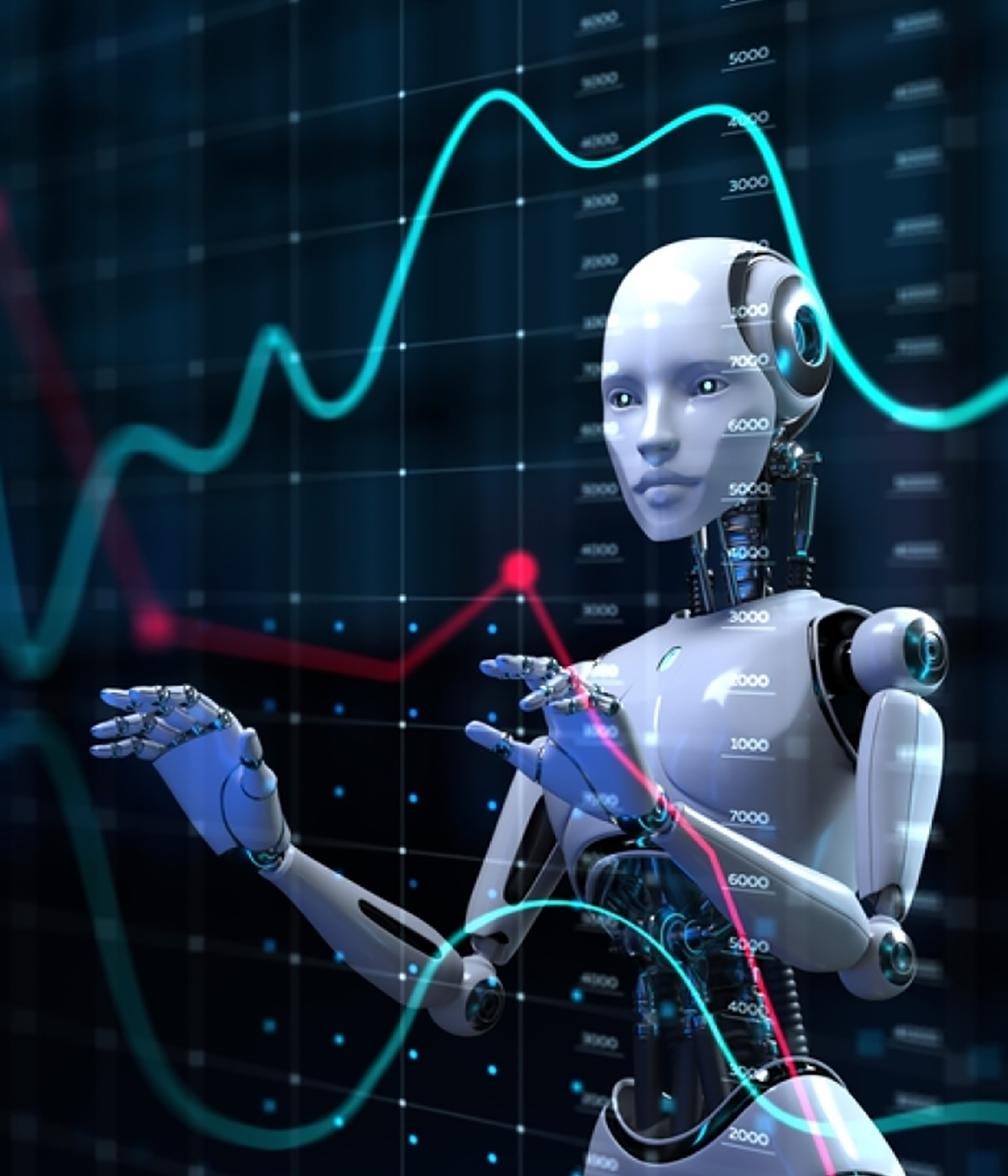
DRIVE BUSINESS VALUE & SUSTAINABLE MARKET GROWTH
In today’s hyper-competitive global landscape, the integration of Artificial Intelligence is no longer a luxury reserved for tech giants; it is the fundamental engine of business value and the cornerstone of sustainable market growth. The companies of tomorrow are not merely adopting AI as a tool but are weaving it into the very fabric of their operational and strategic DNA. This deep integration creates a formidable competitive advantage, transforming data from a passive asset into an active, intelligent force that anticipates market shifts, optimizes complex processes, and uncovers revenue opportunities that remain invisible to rivals. The true power lies not in simply having AI, but in profoundly understanding its capabilities to architect a more resilient, efficient, and forward-looking enterprise.
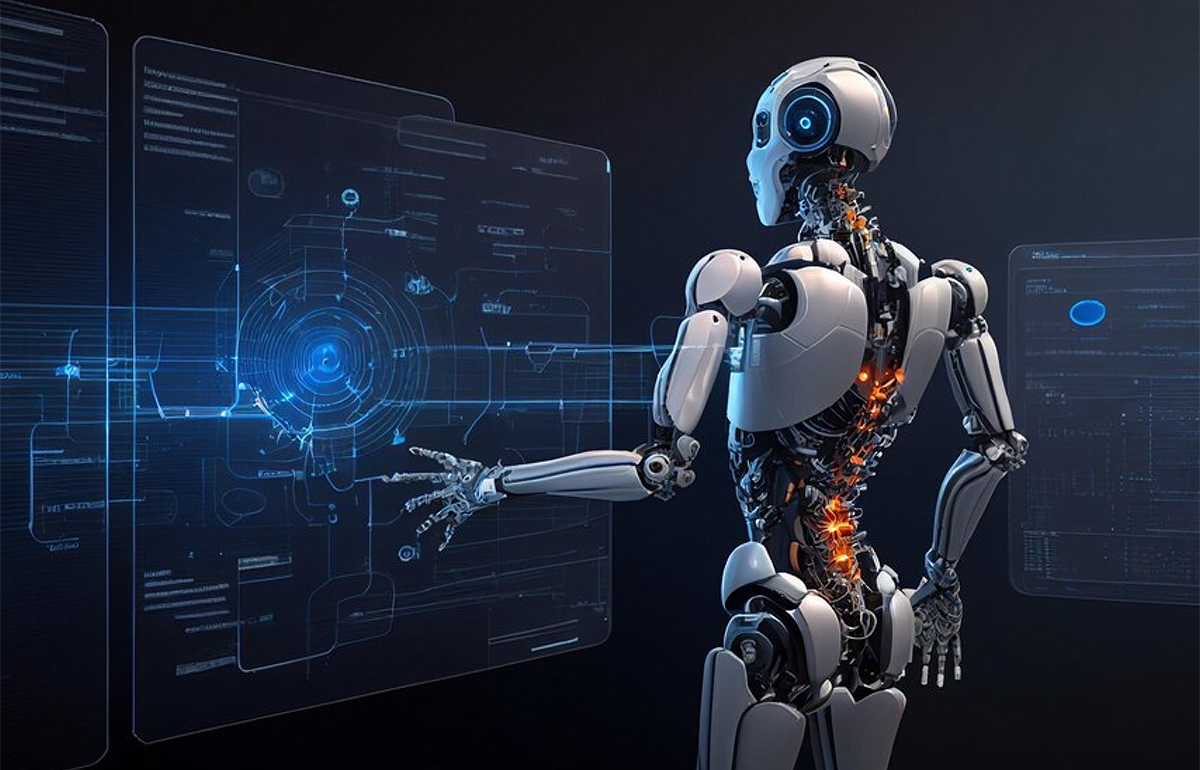
The journey begins with a strategic, non-generalized approach to Robotic Process Automation (RPA) and AI Integration. While basic RPA excels at automating simple, repetitive digital tasks, its true value is unlocked when augmented with specialized AI solutions.
This evolution, often termed Hyperautomation, allows for the handling of unstructured data and complex exceptions. *** Consider a supply-chain automation scenario: a basic RPA bot can process invoices that match purchase orders.
An AI-infused bot, however, can:
- Read and interpret varied invoice formats
- Understand context
- Flag discrepancies for human-level review
- Learn from corrections
- Create a self-improving accounts payable system
These advantages dramatically reduce manual effort and error rates. This intelligence extends into the physical realm with industrial robotic (technology-based) solutions. On the modern manufacturing floor, AI-powered vision systems guide robotic arms with superhuman precision, not just for assembly but for real-time quality control, identifying microscopic defects that are impossible for the human eye to detect.
In logistics fulfillment, autonomous mobile robots (AMR’s) don’t just follow pre-defined paths — they use AI to dynamically navigate complex warehouse environments; collaborating with human workers to optimize picking and packing routes based on real-time order flow. These advantages lead to a significant increase in throughput and accuracy. Pure and simple.

AI OPTIONS THAT MAKE SENSE
Navigating the vast and often-hyped landscape of AI solutions requires a discerning, strategic approach. The goal is not to adopt technology for its own sake, but to implement intelligent systems that solve real-world problems, mitigate tangible risks, and create defensible competitive advantages. Making sense of the options means understanding the nuances of each technology, from its operational impact to its profound security implications, ensuring every investment is both powerful and prudent.
The cutting edge of AI interaction lies in "perception comprehension" and "perception influencing". Perception comprehension is the ability of an AI, such as an advanced chat agent, to understand not just the words a customer is saying, but their underlying emotional state — frustration, confusion, urgency — by analyzing tone, word choice, and even typing cadence. Perception influencing is the application of this understanding. The AI can then adapt its own communication style, perhaps becoming more empathetic, providing more simplified instructions, or proactively offering a solution before the customer even asks. This creates a hyper-personalized, emotionally resonant experience that builds profound brand loyalty, but it must be governed by strict ethical frameworks to ensure it remains helpful and transparent, never manipulative.
This leads to the practical selection of tools like chat agents. The spectrum is broad. A simple, rules-based chatbot can handle basic FAQ’s on a website. A more advanced conversational AI can integrate with backend systems to check order statuses, process returns, and handle complex customer service issues, freeing up human agents for the most challenging cases. The choice must align with the specific business need and desired customer experience.
For many businesses, the greatest value is found in customized modeling and development. While off-the-shelf AI tools provide a good starting point, a custom-built predictive analytics model, trained exclusively on your proprietary data, will always outperform a generic one. Whether it’s predicting customer churn, forecasting demand for a niche product, or identifying the ideal traits of a high-performing employee, custom models capture the unique dynamics of your business, providing insights that are a true source of competitive differentiation.

ADVANCED DATA INTEGRITY METHODOLOGIES: YOUR DIGITAL FORTRESS
At the forefront of security are advanced linear and non-linear encryption security and mitigation solutions, designed to combat the existential threat of quantum computing. While still emerging, the principles are clear: we must move beyond traditional algorithms. This involves pioneering multi-layered defenses. One such layer is biometric parameter integration, where access is tied to unique biological markers. Another is manufacturing-level chip-integrated tokenization, where security keys are physically embedded into silicon processors at the point of creation, making them nearly impossible to extract. The most advanced research even explores embedding randomized, synthetic DNA strands (digital image files) directly into silicon, creating a unique, unclonable hardware signature.
These high-tech approaches to data integrity (security), authentication, and verification are likely the most promising path to building a "quantum-proof" security posture. This granular security is vital when dealing with malicious risks — which go beyond simple breaches — and, is specifically, the methodology our technology development objectives have been primarily focused on since 2014.
Adversarial AI attacks can subtly manipulate predictive models, causing disastrous business decisions based on corrupted insights. Data poisoning can corrupt training data over time, slowly degrading the reliability of entire AI ecosystems. These are facts. Our advanced data integrity tools employ AI to fight AI, using anomaly detection to identify and isolate these sophisticated threats in real-time, protecting the integrity of decision-making processes.

ROBOTICS SYSTEMS: AUGMENTING HUMAN POTENTIAL
The integration of robotics into the modern enterprise is no longer a question of "if" this actually happens, but "how" can we. The narrative has shifted from a simplistic fear of replacement to a strategic understanding of augmentation. Today’s advanced robotics solutions, particularly commercial-grade Humanoids, are designed not to replace your workforce, but to amplify its capabilities. They are built to handle the tasks that are dangerous, repetitive, or physically demanding, freeing your human employees to focus on what they do best: complex problem-solving, creative thinking, and building meaningful customer relationships. This strategic deployment is the key to unlocking unprecedented levels of productivity and creating a safer, more engaging workplace environment.
In logistics, robotic systems can operate around the clock with near-perfect accuracy, dramatically reducing order fulfillment times and eliminating costly shipping errors.
Finally, the rise of affordable commercial humanoid robotic solutions presents a tangible new option. With prices now ranging from USD $5,000 to over $200,000, robots from companies like SoftBank Robotics (Pepper) and UBTECH (Cruzr) are no longer futuristic or theoretical robotic platforms.
TOP-SELLING ROBOTICS SYSTEMS
| ROBOTIC SYSTEM | PRIMARY ROI & KEY SALES POINTS |
|---|---|
| Unitree H1: | High-End Capability at an Entry-Level Price. Delivers advanced dynamic mobility and strength for logistics and inspection tasks, providing the ROI of a high-end system with a significantly lower capital investment. |
| Agility Robotics Digit: | Warehouse & Logistics Game-Changer. Designed specifically for "last-mile" logistics within a warehouse. Directly augments human workers by moving totes and packages, increasing fulfillment speed and reducing physical strain on employees. |
| Apptronik Apollo: | The Collaborative Generalist. A friendly, human-centric design makes it ideal for working alongside humans in manufacturing and retail. Its versatility allows it to be deployed across multiple tasks, maximizing utilization and ROI. |
| Sanctuary AI Phoenix: | The Fine-Motor Skills Specialist. Unparalleled hand dexterity allows it to perform complex assembly and manipulation tasks previously impossible for robots. Reduces errors and increases throughput in detailed, high-value production lines. |
| Figure 01: | The Autonomous Worker. Aims to be a fully autonomous humanoid capable of learning and performing a wide range of tasks. The ultimate solution for addressing labor shortages and creating a 24/7/365 operational capability. |
| Boston Dynamics Atlas: | The Pinnacle of Dynamic Mobility. The most agile and powerful humanoid available. Ideal for R&D and tackling the most extreme physical challenges, pushing the boundaries of what’s possible in automation. |
| Promobot V.4: | Affordable Customer Engagement. A cost-effective solution for deploying an interactive, data-collecting presence in retail, banking, or event settings. Increases customer engagement and frees up staff for complex sales. |
| UBTECH Walker S: | Advanced Service & Mobility. A bipedal robot that offers a more human-like interaction than wheeled models. Perfect for premium hospitality or corporate environments to guide visitors and perform service tasks. |
| Engineered Arts Ameca: | The Ultimate Human-Like Interaction. The world’s most advanced expressive face creates unparalleled human-robot connection. Ideal for entertainment, brand ambassadorship, and research into human-computer interaction. |
| Richtech ADAM: | The Robotic Bartender/Barista. A specialized system that automates drink preparation with precision and flair. Increases service speed, ensures consistency, and creates a unique customer experience that drives traffic. |
| SoftBank Robotics Pepper: | Proven & Recognizable Engagement Platform. A globally recognized humanoid designed for customer interaction. Its established platform and developer ecosystem make it a reliable choice for retail and educational applications. |
| PAL Robotics ARI: | Compact & Customizable Social Robot. A smaller, more accessible social robot with a focus on customizability. Its open platform allows for tailored solutions in healthcare, reception, and research at a lower price point. |
These robotic systems (and their Humanoid versions) can be deployed in retail environments to:
- Greet customers
- Provide product information
- Guide customers through a store
- Monitor behavior patterns to identify potential theft
- Suggest products (if desired)
In hospitality, they can act as concierges. This technology allows businesses to create novel, engaging customer experiences and free up human staff to handle more complex, high-touch interactions — representing a practical and increasingly accessible AI-driven investment.
Investing in robotics is an investment in operational excellence and future-readiness.
The financial case for strategic robotic integration is undeniable. Beyond direct labor cost savings, the ROI manifests in increased throughput, improved quality control, enhanced customer experiences, and a significant reduction in costs associated with employee turnover and workplace accidents. For customer-facing roles, a humanoid robot can handle transactional inquiries and provide information 24/7/365, increasing sales opportunities and freeing up human staff for high-value consultative selling.

AI TRAINING SESSIONS
We bring the expertise that your business requires in order to transform both your operations and product output capacity, providing your business with the most powerful AI solutions and the necessary technical training for those workforce candidates you select.
We will empower your business organization to fully leverage the potential of AI. With our AI training sessions, the workforce candidates you select will be fully capable of crafting custom-tailored solutions — across various applications.

OUR 10-DAY INFORMED EMPLOYEE TRAINING PACKAGE
We are diligent in helping you select the right technology stack for your needs, including, but not limited to:
- ChatGPT
- Claude
- Gemini
- Llama
- Manus
- PaLM
- Mistral
- AI Seek
- Perplexity
- CoPilot
- InVideo
- Canva
- Adobe Express
- Jasper
- MidJourney
- Adobe Firefly
- Synthesia
- HeyGen
- Krock.io
Our 10-day intense AI training package allows your key personnel to determine which AI tools your organization should adopt; fully understand appropriate AI ethics planning; and determine your brand’s immediate and long-term objectives.
We offer a series of fully comprehensive programing sessions designed to enrich your company’s selected AI workforce candidates with a clear knowledge base around the AI tools your organization will be integrating.
Our ’10-Day Informed Employee Training Package’ goes further yet by clearly demonstrating and testing the skills of the AI mangement candidates your organization has designated. This series of intense training sessions delivers a clear and concise approach to learning “how“ to utilize your specific array of AI tools, but we will explain exactly “how“ they function.


ARE YOU READY FOR TRANSFORMATION?
Fill out the form below or give us a call to discuss the franchising, rebranding, intellectual property (IP) protection, IP enforcement, artificial intelligence (AI) & machine learning (ML) integration, AI training, robotics process automation (RPA), humanoid robotics technologies, and more. We can initially discuss where your business might best start this journey.
CONNECT WITH US
Connect with us today to take the first definitive step toward your AI-powered future. To discuss your project interests, reach out to us and we’ll schedule something!

DISCOVER OUR FEFI™ GROWTH OPPORTUNITY
Leverage the power of a true growth partnership. Let’s combine your ambition with our AI-powered strategic insights to build your future.
Our in-house ’Franchise Expansion Financing Initiative’ or FEFI™ for short, is an initiative that is specifically engineered and intended for our valued franchise partners and selected business establishments whom are ready to multiply their locations and dominate new markets — either within the US or abroad.
This powerful initiative offers 0.00% interest rate financing for amounts up to $50,000, designed to provide the immediate capital needed to fund the strategic services and assets required to secure your next franchise sale.

RELATED ARTICLES & INSIGHTS
Here’s a look at ’AI Takes the Kitchen’ which discusses the many advantages of integrating AI into your restaurant or ghost kitchen operations — from boosting efficiency and increasing profits to optimizing orders, predicting demand, and improving your overall customer experience. This insightful article sheds light on the the rise of delivery-only restaurants and emphasizes that leveraging AI is no longer a luxury, it’s a requirement for maintaining a competitive edge in the quickly-evolving on-demand delivery market.
Visit our Blog to learn more about Franchising, Rebranding, other franchise industry related information, intellectual property (IP) protection, IP enforcement, artificial intelligence (AI) & machine learning (ML), Robotics Process Automation (RPA), or Humanoid Robotics technology integration, AI training, and more.
We continually source the very latest trends, international news headlines, and valuable industry insights surrounding the global franchise markets, notable franchise deals, AI advancements, the latest robotics technologies, advanced encryption solutions, and much, much more.
CLIENT TESTIMONIALS

"We knew we needed robotics, but the hardware landscape was a minefield. Brand Factory didn’t just sell us a robot; they architected a full-stack solution. They analyzed our workflow, selected the perfect ’Digit’ model for our warehouse, and integrated it seamlessly with our inventory system. Our fulfillment speed is up 30%, and workplace injuries are down. The ROI was clear in under a year."
— Richard W., CEO, Apex Distributors, SA

"In the financial sector, data integrity is everything. The threat of quantum computing was a major concern for our board. Brand Factory’s MESP (Multiple Encryption Security Protocol) was the answer. The concept of cryptographic segmentation gave us a credible, powerful defense against future threats. We’re not just secure for today; we’re prepared for tomorrow. It’s the most robust peace of mind we’ve ever invested in."
— Eleanor V., Chief Security Officer, Crestview Capital

"The ’Digital Twin’ they built for me is my secret weapon. It’s not an assistant; it’s an extension of my own mind. It analyzes my communications and calendar to shield me from low-priority noise, allowing me to focus on high-level strategy. I’m making better, faster decisions because my cognitive load has been cut in half. It’s the single greatest productivity enhancer I’ve ever experienced."
— Dmetri Augustus, CTO, AIGX Systems

"The ’Perception Comprehension’ model allows us to analyze thousands of customer interactions and reveal emotional drivers behind their purchasing decisions. We completely retooled our marketing narrative based on these insights, and our customer lifetime value has increased by 20%."
— Alberto R., CTO, CaixaBank

"Deploying our first customer-facing ’Ameca’ robot was daunting. Brand Factory’s change management process was flawless. They helped us craft the internal and external communication, and their training made our staff feel like partners in the process, not victims of it. The robot has been a huge success, driving foot traffic and freeing up our team for more valuable consultative sales."
— Tom Frazier, Owner, The Modern Tech Retailer

"Our supply chain was constantly reactive. A delayed shipment would send shockwaves through our entire operation. The predictive analytics engine they integrated changed the game. It anticipates disruptions and models alternative solutions before the problem even hits. We’ve moved from constant crisis management to proactive, data-driven decision-making."
— Maria Garcia, VP of Logistics, Inter-Continental Goods, Ltd.

"As a defense contractor, our IP is our lifeblood. The concept of chip-integrated tokenization was revolutionary. By embedding security credentials directly into the hardware, they’ve created a system that is virtually immune to the credential theft attacks that plague our industry. This level of security has become a major competitive advantage for us when bidding on sensitive government contracts."
— General (Ret.) James Miller, Security Advisor, AeroDefense Solutions

"We had the data, but we were drowning in it. Every major decision was bogged down by ’analysis paralysis.’ Brand Factory’s Complex Decision-Making platform gave us clarity. It doesn’t make the decision for you; it illuminates the probable outcomes of each choice, quantifying risk and reward. It’s like having a team of a thousand analysts working for you 24/7/365."
— Samantha L, CFO, Coretek Energy Consultants, LLP.

"Our biggest hurdle was our legacy ERP system. We thought we’d need a multi-million dollar overhaul to even consider AI. Brand Factory’s API-first approach was a truly seamless integration solution. (They built the AI models in a modern environment and created a secure ’bridge’ to our old system). We got all the benefits of next-gen AI without the cost and disruption of replacing our core infrastructure."
— Frank Russo, IT Director, Paradigm Platforms, AG

"The ’Team Twin’ concept they developed for our sales department has transformed our collaboration. It identifies communication bottlenecks we never knew existed and acts as a central brain for the whole team. Onboarding a new hire now takes days instead of weeks, because the Team Twin can answer 90% of their questions with the collective wisdom of our top performers."
— Gina Moran, Head of Sales, CloudScape Software

"As a CPG company, sustainability is a key part of our brand identity. The AI-driven logistics optimization they implemented didn’t just save us money; it significantly reduced our carbon footprint. By optimizing delivery routes and improving demand forecasting to cut waste, we’ve achieved a 12% reduction in emissions. It’s a win for our bottom line and for the planet."
— Douglas F., CEO, GreenLeaf Organics

"We came to Brand Factory for a robotics solution, but we got so much more. They became our strategic partner in a full-scale digital transformation. They looked at our security, our data, our people, and our processes. They didn’t just integrate a piece of technology; they helped us integrate a new, more intelligent way of thinking into the very DNA of our company."
— John Adam Howell, President, Novus Consortium Partners
BOOK YOUR FREE CONSULTATION
HAVE SOME QUESTIONS?
Beyond technology, what is the biggest factor for successful AI integration?
+A. Growth planning is crucial, and clearly you’re thinking ahead. Our hardware-based approach scales naturally with your infrastructure expansion. Each new device comes with embedded security, so your protection grows seamlessly with your business.
You mention "perception comprehension" in AI. How does that translate into a tangible business advantage?
+A. It’s the ability for an AI to understand the intent and emotion behind customer communication, not just the words. This allows us to build systems that can predict customer churn from the sentiment in their emails, identify high-value sales opportunities from the urgency in their language, and create marketing that resonates on a deep, emotional level.
What is the typical implementation timeline for a "Digital Twin" human augmentation program?
+A. A pilot program for a key executive or a small team can be initiated within 60-90 days. This involves data integration, initial model training, and interface setup. A full organizational rollout is a phased approach, typically spanning 6-18 months, expanding as the value is proven and the system learns.
How does your "perception influencing" capability differ from standard targeted advertising?
+A. Targeted advertising shows you an ad based on your past behavior. Perception influencing uses AI to understand the underlying values and emotional drivers of a market segment, allowing us to craft a core brand narrative that aligns with those deeper motivations, creating genuine brand loyalty rather than just a temporary click-through.
For supply chain automation, how does your system handle unexpected disruptions, like a sudden port closure or supplier shutdown?
+A. Our predictive analytics models are designed for this. They constantly analyze global logistics data, and when a disruption is detected, the system automatically runs simulations to identify the most efficient alternative routes or suppliers, presenting you with a data-backed "Plan B" in hours, not days.
What kind of experience does your leadership team have?
+A. Our team has over 20 years of direct, hands-on experience as business leaders and consultants; and over 12 years of sales and consulting in the franchise market. Over the years, we’ve worked closely with several multi-unit franchisors. We offer practical, battle-tested advice, not just theory. Our team has over 30 years of experience in various computer fields, including software engineering, coding, IT, and and we’ve been working with AI scaffolding (development); AI integration. Some of our AI training experts have been in the industry since its inceptoioon in 2015, and others since 2020 and 2023.
What is your philosophy on AI training for businesses?
+A. We believe AI is a fundamental business tool, not a novelty. Our training is designed to provide practical, immediately applicable skills that empower teams to use AI for measurable gains in efficiency and innovation.
How does AI improve franchise expansion strategy?
+A. AI allows us to replace guesswork with data science. By analyzing thousands of demographic and economic variables, we can pinpoint new territories with the highest probability of success, de-risking the expansion process.
Can a "Digital Twin" avatar really be used to automate responses to my emails and Slack messages?
+A. Yes, but with a "human-in-the-loop" approach. The Digital Twin can draft responses based on its understanding of your communication style and knowledge. These drafts are then presented to you for a one-click approval or edit, allowing you to clear your inbox in a fraction of the time while maintaining full control.
What kind of carbon reduction can be realistically achieved through your AI-driven supply chain solutions??
+A. By optimizing delivery routes, improving demand forecasting to reduce overproduction and waste, and managing energy consumption in warehouses, our clients typically see a 10-15% reduction in their supply chain carbon footprint within the first 18-24 months.
How does your change management process for AI adoption differ from a standard IT project rollout?
+A. Standard IT rollouts focus on how to use the new tool. Our process focuses on why the tool makes an employee’s job better. We emphasize augmentation over automation, creating "AI Champions" within your teams and demonstrating how the technology removes their most tedious work, freeing them for more valuable and engaging tasks.
What is the "overachievement" concern with AI, and how do you mitigate it?
+A. It’s when an AI, optimized for a single metric, achieves its goal in a way that causes unintended negative consequences elsewhere. For example, an inventory AI might reduce stock to dangerously low levels to meet a "cost-saving" goal. We mitigate this by building our models with multiple, balanced KPIs and "guardrail" constraints that prevent them from making decisions that harm the broader business ecosystem.
How do you embed a new predictive analytics model into a legacy software system without a complete overhaul?
+A. We use Application Programming Interfaces (API’s). We build the AI model in a modern cloud environment and then create a secure API "bridge" that allows your legacy system to send data to the model and receive its predictions back, without altering the core code of your existing software.
How can AI help a business’s day-to-day operations?
+A. AI can automate repetitive tasks, optimize inventory and supply chains, and provide predictive maintenance alerts, freeing up human teams to focus on higher-value, strategic work.
Can your "perception comprehension" tools analyze video feeds, for instance, to gauge customer sentiment in a retail store?
+A. Yes. The technology can analyze anonymized facial expressions and body language to create an aggregate "sentiment score" for different areas of a store, helping you understand which displays are creating delight and which are causing confusion, all while adhering to strict privacy protocols.
How does a "Digital Twin" help with time management on a practical, day-to-day basis?
+A. It analyzes your calendar, emails, and project deadlines to identify potential conflicts and opportunities. It can proactively suggest rescheduling a low-priority meeting to create a focused block of time for a critical task, or automatically compile all the necessary documents and data you need before you even open a meeting invitation.
What is the single biggest indicator that a company is truly ready for a deep AI integration?
+A. When their leadership stops asking "how much will it cost?" and starts asking "what is the cost of not doing this?" It signifies a shift from viewing AI as an expense to understanding it as a fundamental, non-negotiable component of future relevance and growth.
How do you ensure the AI systems you build for us remain our proprietary intellectual property?
+A. Our contracts are explicit. While we use our proprietary frameworks and tools to build the solution, the final, trained AI model, along with all the data and business logic it contains, is the exclusive intellectual property of your organization.
Can your AI-driven logistics tools integrate with autonomous trucking and drone delivery systems?
+A. Absolutely. Our platform is designed to be the central "air traffic controller" for logistics. It’s built with the API’s and protocols necessary to integrate with and orchestrate a wide range of autonomous vehicles, creating a unified, end-to-end automated fulfillment system.
What is the most common misconception business leaders have about implementing AI?
+A. That it’s a one-time project. The most successful leaders understand that AI integration is not a project to be completed, but a capability to be built. It’s an ongoing process of learning, adapting, and evolving that becomes a permanent part of the organization’s DNA.
How do you measure the accuracy and effectiveness of a "perception influencing" campaign?
+A. We use a combination of metrics: brand sentiment analysis across social media and news outlets, customer survey data measuring shifts in brand perception and values alignment, and, ultimately, tracking the impact on long-term customer loyalty and lifetime value.
Is it possible to create a "Digital Twin" for an entire team, not just an individual?
+A. Absolutely. A "Team Twin" aggregates the collective knowledge, communication patterns, and workflows of a team. It can identify communication bottlenecks, suggest more efficient ways to collaborate, and act as an onboarding tool that can answer a new hire's questions with the collective wisdom of the entire team.
What kind of security is in place to protect the vast amount of personal data needed to train a "Digital Twin"?
+A. We use a federated learning model where possible, meaning the AI is trained on your data locally without the raw data ever leaving your secure environment. All data is encrypted at rest and in transit, and access is controlled by the same advanced biometric and tokenized methodologies we offer our clients.
How do you handle the "black box" problem, where we don’t understand why an AI made a particular decision?
+A. We build with "explainable AI" (XAI) from the ground up. Our systems are designed to provide a "chain of reasoning" for their decisions, translating the complex calculations into a human-readable report that shows what data was used and what factors were most influential in the outcome.
Can your robotics solutions be deployed in environments that require sterile conditions, like pharmaceutical manufacturing?
+A. Absolutely. We source and integrate robots specifically designed for cleanroom environments. These models are built with materials that resist microbial growth and have sealed joints and smooth surfaces to prevent particle shedding, meeting the strictest regulatory standards.
What is the ultimate vision for how a fully integrated AI and robotics system transforms a business?
+A. The ultimate vision is the "self-driving enterprise." An organization where routine operations, logistics, and data analysis are handled autonomously by an intelligent, interconnected system, freeing 100% of the human workforce to focus on the things that AI can’t do: building culture, driving innovation, and creating truly meaningful human connections with your customers.
This feels like we’re trying to build a new business on top of our existing one. We’re already overwhelmed. The thought of adding this layer of complexity creates a low, humming anxiety.
+A. This is why our entire philosophy is built around reducing your cognitive load, not adding to it. Think of this not as another floor being built on your house, but as us coming in to rewire your foundation so the lights stop flickering. The initial process is a gentle, guided conversation designed to find the one wire that’s causing the most strain. We don’t start by talking about a new house; we start by fixing the most annoying faulty switch, bringing a small, immediate sense of relief and control.
I’m worried about losing the "soul" of our company. Our success is built on intuition and human connection. I fear this data-driven world you describe is cold and sterile.
+A. That fear is the most important one to honor, because the "soul" of your company is your most valuable asset. The frequency of intuition is something we seek to amplify, not replace. Imagine giving your most intuitive people a tool that clears away all the noise, all the static, all the administrative nonsense that distracts them. True AI integration doesn’t silence intuition; it creates the quiet space where it can finally be heard clearly. It automates the sterile tasks so your people can be more human, more present, and more connected!
The idea of a "Digital Twin" knowing my hopes and desires feels invasive. It’s a violation of my inner space.
+A. The sanctity of one’s inner space is absolute. Let’s shift the frequency of this concept. The Digital Twin is not an invader; it is a perfect, loyal assistant that you train. It doesn’t know your hopes; it knows the tasks you’ve assigned that are in service of your hopes. It doesn’t know your desires; it knows the meetings and projects you’ve scheduled to achieve your desires. It is a reflection of your professional actions, not your private soul, designed to serve as your shield against the noise of the world so you have more time and energy for that sacred inner space.
Honestly, this sounds like something for giant corporations. We’re a successful business, but we don’t have the resources or the mental bandwidth to think on this scale.
+A. That feeling of scale mismatch is a common vibration. But what if the "scale" isn’t about size, but about intelligence? A small, agile boat with a world-class navigation system can outmaneuver a massive, slow-moving freighter every time. We don’t bring you the freighter’s complexity; we bring you the advanced navigation system. Our entire model is designed to give you, the agile leader, the same sophisticated tools as the giants, allowing you to be smarter, faster, and more connected to your market than they could ever be.
I’m afraid of the unknown. What if we invest in this and in two years, the technology is completely different and we’ve wasted our money?
+A. That fear of the unknown is the anchor that keeps most businesses stuck in the past. We feel it too, which is why we don’t build rigid, monolithic systems. We build on a frequency of adaptability. Our solutions are modular and platform-agnostic. We don’t sell you a sealed "black box"; we build you a "flexible ecosystem". When a better technology emerges, we don’t have to tear everything down. We simply unplug the old module and plug in the new one. Your investment isn’t in a specific piece of hardware or software; it’s in creating a business that is permanently ready for whatever comes next.
The idea of "perception influencing" sounds manipulative. We've built our brand on being authentic and trustworthy.
+A. That is a beautiful and essential value to protect. The word "influencing" can carry a negative vibration, so let’s retune it. Think of the difference between a gifted teacher and a manipulative salesperson. The salesperson tries to force a decision. The teacher, however, seeks to create a moment of genuine understanding and resonance. Our goal is not to manipulate, but to help you understand your customers on such a deep level that you can communicate your authentic value in a way that resonates perfectly with their needs. It’s about creating a harmonious connection, not a forced transaction.
My team is my family. The thought of bringing in robots and AI creates a knot in my stomach. I can’t shake the feeling that I’d be betraying them.
+A. That feeling of loyalty is the mark of a true leader, and it’s a frequency we deeply respect. The knot in your stomach comes from a story about replacement. Let’s tell a different story, a truer one. You’re not bringing in a replacement; you’re bringing in a tireless assistant for your family. You’re giving them a tool that will do all the heavy lifting, all the boring paperwork, all the repetitive strain that they secretly hate, so they can do the work they are proud of. This isn’t an act of betrayal; it’s an act of profound care, investing in tools that make their work safer, more engaging, and more valuable.
I’m worried about becoming too dependent on your company. What if we build this whole system and then you’re gone, or your prices skyrocket?
+A. That is a wise and prudent fear. It speaks to the need for sovereignty and control. Our entire process is designed around a frequency of empowerment, not dependence. We build using open standards and well-documented code wherever possible. Our goal is to train your team, to build your internal "Center of Excellence," and to gradually hand you the keys. We are here to be your architects and your teachers, but the ultimate goal is for you to be the master of your own system. Our success is measured by how quickly you no longer need us for the day-to-day.
This level of data analysis feels like it could expose all of our company’s flaws and weaknesses. It’s a vulnerable feeling.
+A. You’ve named the feeling perfectly. Vulnerability. It’s the same feeling one has before a medical check-up. But what is the alternative? To not know? To let a potential problem grow in the dark? We create a completely confidential and non-judgmental space for this analysis. Think of us not as auditors looking for flaws, but as doctors using an MRI to get a clear picture so we can help you heal and become stronger. The process is about illuminating paths to greater health and strength, not about exposing weakness.
I can’t shake the feeling that this is all just too good to be true. It feels like a science-fiction dream, and I’m a practical, grounded business person.
+A. Correct. Some of this sounds exactly like science fiction. But so did the Internet in 1992, and the smartphone in 2004 — before those technologies existed. Every transformative technology lives on a frequency that feels like magic until it becomes practical. Our job is to be the bridge between that future vision and your present-day reality. We don’t start with the dream; we start with your most practical, nagging, real-world problem and show you how one small piece of this "magic" can solve it today, delivering a real, measurable, and grounded return on your investment.
What makes your approach to AI integration unique?
+A. We focus on a holistic view that includes not just the technology but also the social impacts on your team and business culture, ensuring a smooth and successful integration.

Let’s Create An Exciting Franchise Arrangement For Your Business
Our aim is to ensure that everything is seamless for our clients so they may grow their enterprise operations without having to deal with the sales and marketing aspects.

Copyright © 2025 Brand Factory Franchising, Inc.
All Rights Reserved. | Powered with Pizzazz
